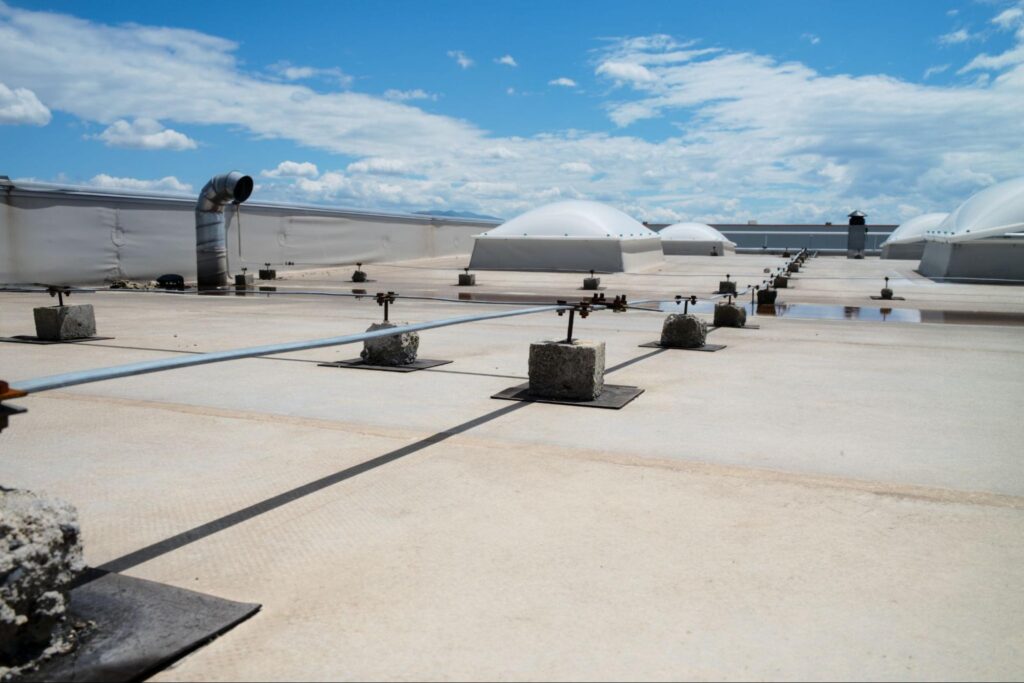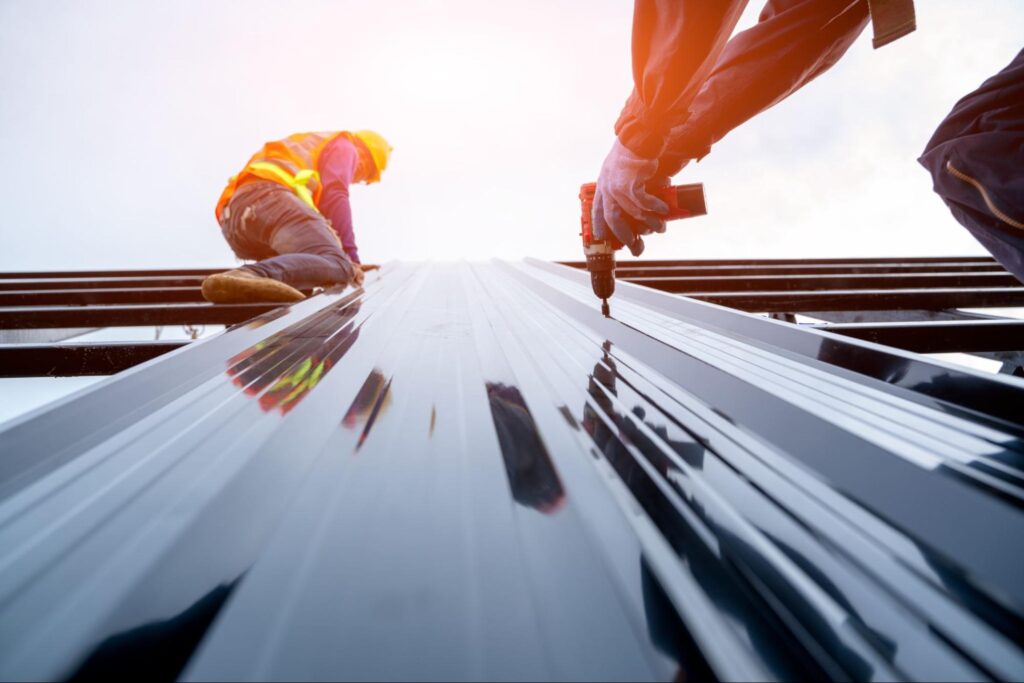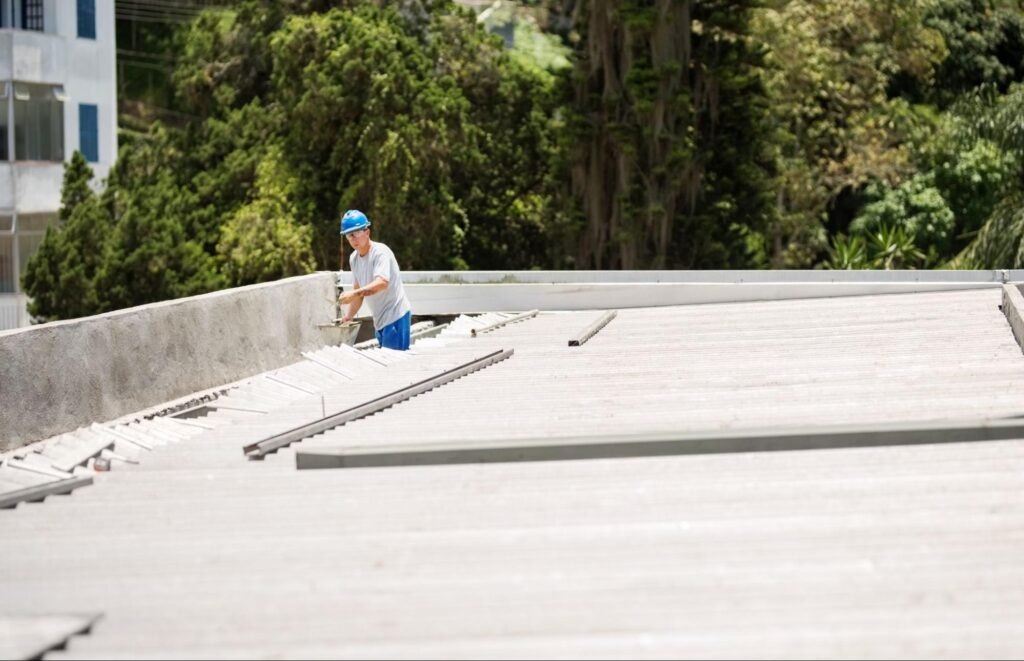Choosing Roofing Solutions for Commercial Buildings
Roofing is more specialized than you may think. For example, it depends a lot on exactly where it will be placed. Pinnacle Roofing is going to discuss what you should consider when choosing roofing solutions for commercial buildings.
What is Commercial Roofing?
Commercial roofing consists of installing, repairing, and maintaining roofing systems for buildings like offices, retail stores, warehouses, and other industrial facilities. The counterpart to this would be residential roofing.
For commercial roofing, we focus on a few main factors when deciding on an approach for a client:
- Durability: Commercial roofs must withstand harsh weather, such as heavy rain, snow, hail, and high winds. For that reason, the materials used are generally much thicker and stronger than other residential roofing materials.
- Energy Efficiency: Many commercial roofs are structured to improve energy efficiency. Reflective materials like TPO, PVC, and metal roofs can all actively reduce heat absorption and lower cooling costs for buildings.
- Maintenance: Like with residential roofing, regular inspections and maintenance are vital to prolonging commercial roofs’ lifespan. Some of our common maintenance tasks may include cleaning debris, checking for leaks, and repairing damaged areas.
- Cost: The cost of commercial roofing varies considerably, depending on the type of roofing material, the size of the building, and the complexity of the installation. Due to their larger size and specialized installation techniques, commercial roofs are generally going to be more expensive than residential roofs.
- Installation: Commercial roofing requires the skill of a company like ours with an expert crew, especially for large-scale buildings with complex roof designs.

Commercial Roofing Systems
Here is an in-depth look at some of the main systems used in commercial roofing:
1. TPO (Thermoplastic Polyolefin) Roofing
- Description: TPO is made from a blend of rubber and plastic polymers. It’s highly durable, UV-resistant, and energy-efficient, which makes it ideal for commercial buildings.
- Advantages: Durability, energy efficiency, resistance to punctures, and easy installation.
- Lifespan: 15-20 years with proper maintenance.
2. Built-Up Roofing (BUR)
- Description: Built-up roofing means alternating layers of a substance called bitumen and reinforcing fabrics which form a durable, weatherproof roof. It is one of the oldest commercial roofing methods.
- Advantages: It has proven durability, excellent protection against UV rays, and cost-effectiveness.
- Lifespan: 15-30 years.
3. Modified Bitumen Roofing
- Description: Modified bitumen roofing is an asphalt-based roofing system that is reinforced with fiberglass or polyester to increase strength and durability. Like EPDM, it’s commonly used on low-slope or flat roofs.
- Advantages: Durability, flexibility, and resistance to weather elements.
- Lifespan: 10-20 years.
4. EPDM (Ethylene Propylene Diene Monomer) Roofing
- Description: EPDM is a rubber-based, single-ply roofing material. It’s loved for its flexibility and durability and is often used on flat or low-slope commercial roofs.
- Advantages: Flexibility, weather resistance, and ease of repair.
- Lifespan: 20-30 years.
5. PVC (Polyvinyl Chloride) Roofing
- Description: PVC roofing membranes are made from strong plastic and are reinforced for added durability. They offer extremely high weather resistance and are ideal for flat roofs.
- Advantages: Resistant to chemicals, fire, and UV rays; highly durable and energy-efficient.
- Lifespan: 20-30 years.
6. Metal Roofing
- Description: Metal roofs can be made from steel, aluminum, or copper panels. They are known for their long lifespan and resistance to extreme weather conditions.
- Advantages: Longevity, durability, low maintenance, and eco-friendliness.
- Lifespan: 40-70 years.

FAQs About Commercial Roofing
Finally, let’s go over some questions people ask us about this type of roofing and what it entails!
Q: What are some signs that a commercial roof needs repair or replacement?
A: There are a number of signs to look out for, such as:
- Leaks or water stains inside the building.
- Ponding water on flat roofs.
- Visible damage to the roof membrane (cracks, blisters, punctures).
- Sagging or weak spots.
- Unusual increases in energy bills (indicating insulation or roof issues).
- Mold or mildew growth.
Q: What is ponding water, and how do you prevent it?
A: Flat roofs are more at risk for developing ponding water. This can happen when water stays on a roof for more than two days after rainfall due to inadequate drainage or sloping. We prevent this by ensuring your drainage systems are effective, that you have tapered insulation, and that maintenance checks are done on time.
Q: What’s the role of insulation in a commercial roof?
A: Insulation in a commercial roof regulates indoor temperatures by reducing heat transfer and improving energy efficiency. It can also lower heating and cooling costs and make the building more comfortable for people.

Covering All of Your Bases
We can cater to your needs regardless of what you’re looking for in a commercial roof! Pinnacle Roofing wants to ensure that every single one of our commercial clients is satisfied—and these reviews are a testament to that! We hope to hear from you soon!
